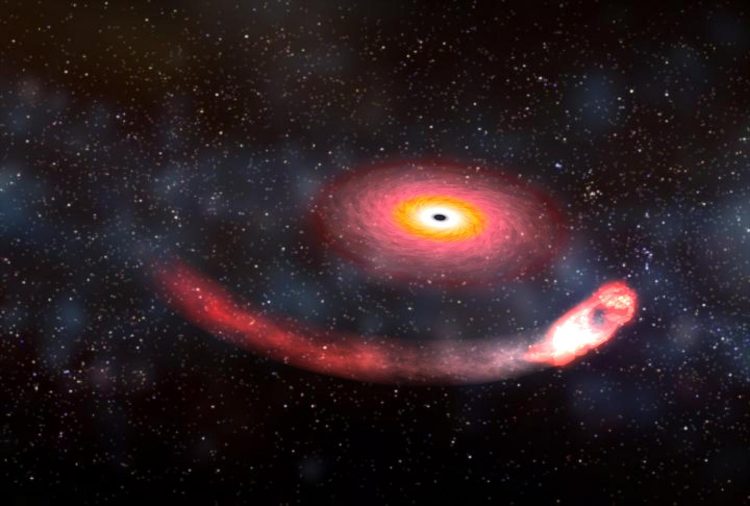Unravelling the mystery of gamma-ray bursts

This is an illustration of how a neutron star might orbit a black hole. Credit: NASA
Researchers at Cardiff University are trying to work out the possible sounds scientists might expect to hear when the ultra-sensitive LIGO and Virgo detectors are switched on in 2015.
It's hoped the kilometre-scale microphones will detect gravitational waves created by black holes, and shed light on the origins of the Universe.
Researchers Dr Francesco Pannarale and Dr Frank Ohme, in Cardiff University's School of Physics and Astronomy, are exploring the potential of seeing and hearing events that astronomers know as short gamma-ray bursts.
These highly energetic bursts of hard radiation have been seen by gamma-ray satellites such as Fermi and Swift, but the exact origin of these quickly disappearing flashes of gamma-rays remains unknown.
“By picking up the gravitational waves associated with these events, we will be able to access precious information that was previously hidden, such as whether the collision of a star and a black hole has ignited the burst and roughly how massive these objects were before the impact,” explained Dr Ohme, who has focused his research on predicting the exact shape of the gravitational wave signals scientists are expecting to see.
Dr Pannarale added: “A possible scenario that could produce gamma-ray bursts involves a neutron star, the most compact star in the Universe, being ripped apart by a black hole while orbiting it. The remaining matter would be accelerated so much it could cause the energy bursts we are observing today.
“In some cases, by observing both electro-magnetic and gravitational wave signatures of the same event, we will be able to better understand the behaviour of material in the highest density region we know in our Universe, so that we will start to rule out various theoretical models that have been proposed but cannot be tested otherwise.”
The results of Pannarale and Ohme have been published in Physical Review Letters: http://journals.aps.org/prl/abstract/10.1103/PhysRevLett.113.151101
Media Contact
More Information:
http://www.cardiff.ac.uk/All latest news from the category: Physics and Astronomy
This area deals with the fundamental laws and building blocks of nature and how they interact, the properties and the behavior of matter, and research into space and time and their structures.
innovations-report provides in-depth reports and articles on subjects such as astrophysics, laser technologies, nuclear, quantum, particle and solid-state physics, nanotechnologies, planetary research and findings (Mars, Venus) and developments related to the Hubble Telescope.
Newest articles

Can lab-grown neurons exhibit plasticity?
“Neurons that fire together, wire together” describes the neural plasticity seen in human brains, but neurons grown in a dish don’t seem to follow these rules. Neurons that are cultured…

Unlocking the journey of gold through magmatic fluids
By studying sulphur in magmatic fluids at extreme pressures and temperatures, a UNIGE team is revolutionising our understanding of gold transport and ore deposit formation. When one tectonic plate sinks…

3D concrete printing method that captures carbon dioxide
Scientists at Nanyang Technological University, Singapore (NTU Singapore) have developed a 3D concrete printing method that captures carbon, demonstrating a new pathway to reduce the environmental impact of the construction…



